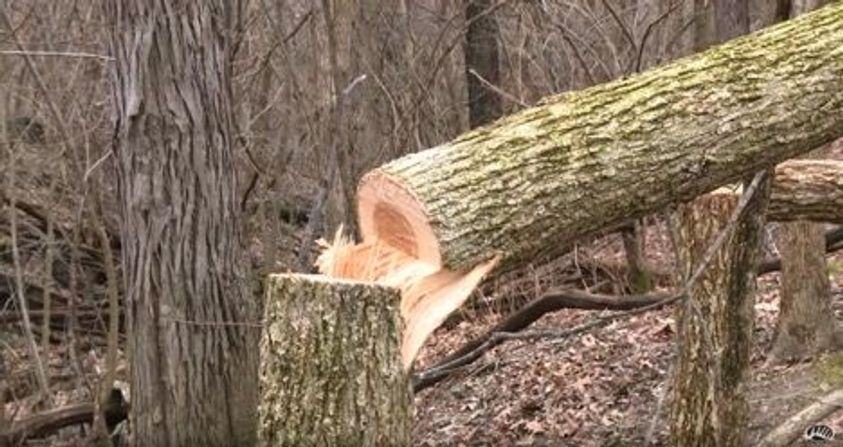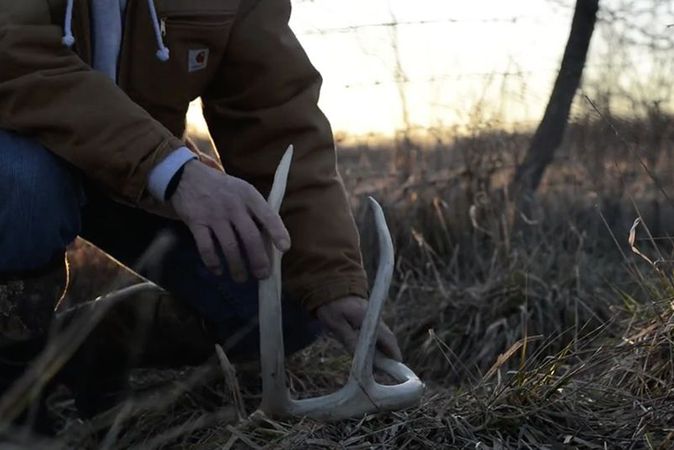Hinge cutting trees is a great practice in late summer just as it is in late winter or early spring. In a previous blog, we talked about the benefits of burning later in the year. The same goes for cutting young trees that could serve the deer herd as a food source and sanctuary, the land as it opens up the canopy and helps developing undergrowth, and the deer hunter to create funnels.
Also known as half cutting, hinge cutting is done mostly with a chainsaw. Instead of running the saw through the entire trunk, leave about one-third of the meat so that the tree and trunk are still connected when it falls over. This method works best on small to medium sized trees; say the size of a baseball bat, that you’ll find clustered together in fairly thick stands. Remember, you’re hoping to create food and reduce clutter on the forest floor. Not only would hinge cutting large trees be dangerous, it’s also counterintuitive.
Food
Like burning, hinge cutting trees helps saplings and native vegetation that deer will eat thrive. Plus, when you leave the requisite amount of meat on the tree, it could live on for years, producing a ton of food for deer that they wouldn’t otherwise have.

Sure, you could cut the tree completely off, and the deer will have sprouts from the stump. But this isn’t a long-term option. Hinge cutting trees allows them to continue producing leaves and shoots that deer find desirable.
Funnels
A great benefit of hinge cutting is creating funnels. Let’s say you’ve mapped a buck’s early season travel route from his bedding area to the food plot. What if there’s not a tree close enough to the game trail he typically uses to hang a stand? Hinge cutting will give you the opportunity to potentially reroute his path, force him to detour closer to your stand.
Sanctuary
This is a place where a deer should never feel threatened. It has ample cover, food, and a good wind. Most importantly, no human presence whatsoever. Hinge cutting can help create this type of habitat.
“One of the things I like the most about hinge cutting is creating a habitat that is very conducive to sanctuaries,” said Dan Perez. “It gives deer a lot of security.”

For bedding areas, cut at chest height to create a canopy where deer can get under. You’ll be amazed at the thick, nasty cover that sprouts from a few hinged-cut trees.
“When the trees are laying horizontally, it opens the canopy so more sunlight comes into the forest floor and builds that understory so it’s thick,” said Perez. That’s even more cover. It builds a thick brushy area with more tangles. It’s thick and nasty and that’s where those big bucks live and hide.”
Safety is always the most important issue when using a chainsaw and standing around falling trees. Be sure to watch our Landbeat video with Dan Perez as he learns how to use a wedge while hinge cutting from hinge cutting expert Jake Ehlinger.







